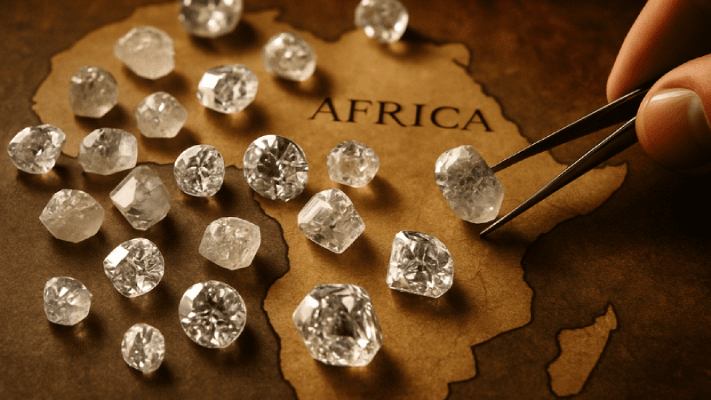
Aukera launches “Signature Orchid” collection across 19 stores pan India
September 23, 2025
Ahmed Bin Sulayem, Executive Chairman & CEO
September 23, 2025Can Africa become ‘The Emerging Power’ in the global diamond industry?

The rising competition from lab-grown diamonds, changing consumer preferences, and greater hold from African producers are combining to alter who owns the sparkle and where the value in the diamond value chain flows. Lab-grown diamonds are cheaper, faster to produce, and increasingly accepted—especially among younger and values-driven buyers. The global market for lab-grown diamonds was valued at nearly $23 billion in 2023 and is projected to triple by 2032.
At the same time, production of natural diamonds has fallen from 175 million carats in the mid-2000s to about 121 million in 2023. While Africa supplies about 65% of the world’s diamonds, most of the value is added further downstream. With 90% of diamonds being cut and polished in India, and Belgium and Israel handling many of the high-end stones, African nations, despite being the source, keep only a small portion of the final retail price.
So, African producer nations, led by Botswana, Namibia, Angola, and South Africa, are demanding more local beneficiation policies that require cutting, polishing, and sometimes marketing to happen closer to home. More countries are pushing for transparency in sales, alternative sales models, and final polished value rather than volatile rough stone prices.
For Africa, “owning the trade” means more than just mining rough stones. It’s about building downstream capacity—investing in local cutting, polishing, grading, and even launching homegrown brands. It requires policy reform, infrastructure, and transparency to attract investment and meet global quality standards.
If they succeed, the next generation of the diamond industry could see a far greater share of the value, and the story originates in Africa. Whether Africa can seize this moment will depend on policy, investment, global alliances, and its ability to adapt to the rapidly changing dynamics of the diamond industry, say global diamond industry observers.


